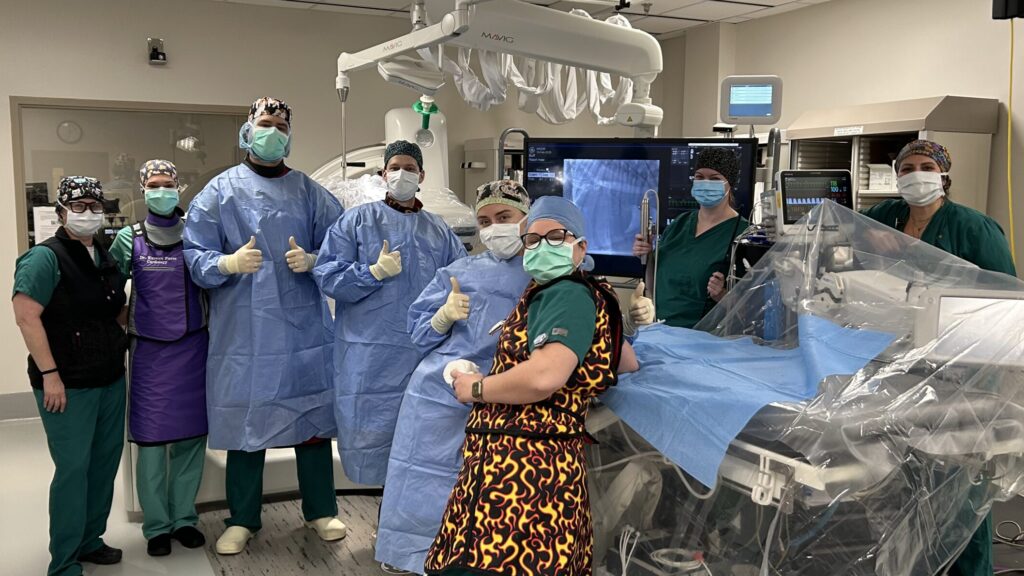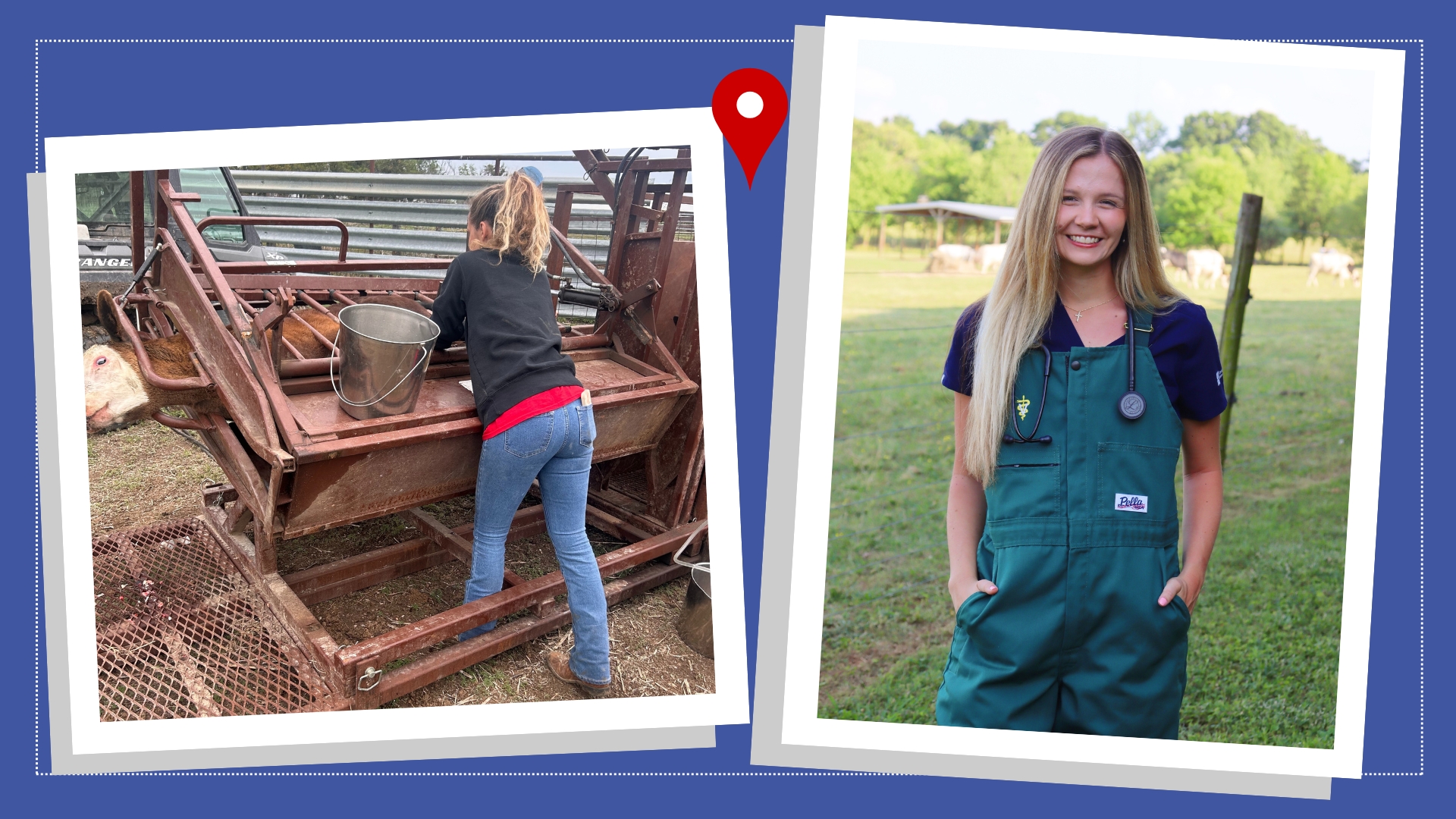One of Two: NC State Cardiology Faculty Member has Rare Expertise in Interventional Procedures
Dr. Kursten Pierce is making an impact on the College of Veterinary Medicine’s cardiology program with cutting-edge interventional cardiology knowledge.

Now that the American College of Veterinary Internal Medicine has recognized approved fellowship programs in interventional cardiology, Dr. Kursten Pierce of the NC State College of Veterinary Medicine is one of only two veterinarians with FACVIM after her name.
The assistant professor of cardiology and another veterinarian completed the specialized interventional cardiology fellowship several years ago. Two other veterinarians are in the process of obtaining the certification.
“This rare credential awarded by ACVIM is a wonderful recognition of something Dr. Pierce’s colleagues, clients and patients already knew,” said Dr. Joshua Stern, associate dean of research. “She is an incredibly talented clinician and innovator in the space of interventional cardiology.”
Interventional cardiology is a minimally invasive approach to heart procedures, where doctors use a catheter and a guide wire to enter a blood vessel to perform cardiac procedures that correct heart defects, without opening up the chest or heart of an animal.
Pierce now brings specialized knowledge to the NC State Veterinary Hospital and its clients about how to navigate the delicate pathways and tissues of the heart, which is especially difficult when working on hearts of all shapes and sizes as veterinarians do. These skills are what led the ACVIM to recognize and approve the fellowship.
Pierce was a part-time veterinary emergency room technician during her undergraduate studies at Roger Williams University when she had the opportunity to work with cardiologist Dr. Jim Ross at Cape Cod Veterinary Specialists, providing her first exposure to cardiology and igniting her love for cardiology.
“His technician had called in sick and so they needed someone to help hold animals for echo, so they pulled me to help,” Pierce recalls. “I just fell in love with cardiology – he was doing the echoes and explaining the different chambers of the heart. The medications he was prescribing and the way he explained everything to the clients just made a lot of sense.”
From that moment forward, Pierce immersed herself in cardiology whenever she could during her veterinary training at the Western University of Health Sciences and as an intern at Angel Animal Medical Center and a resident at the Cummings School of Veterinary Medicine at Tufts University.
In 2017, Pierce signed up for a two-day interventional cardiology course taught by Dr. Brian Scansen, her soon-to-be mentor, in Las Vegas that led to her applying for a new interventional cardiology fellowship program at Colorado State University.
“I went through the fellowship, and my focus was just on interventional cardiology and so I scrubbed into every procedure and learned advanced techniques for interventional cardiology,” Pierce explains. “During that time, I was often in the cath lab and I scrubbed into over 300 procedures while I was there over the two years.”
For comparison, a traditional cardiology residency in veterinary medicine requires a minimum of 15 cardiac procedures over a three-year residency. On average, veterinary cardiology residents will finish their studies having completed 40 to 120 cardiac procedures.
Once she finished the fellowship, Pierce knew she wanted to be able to teach what she had learned and mentor others.
In 2021, she became an assistant professor of cardiology at the NC State College of Veterinary Medicine, working closely with cardiology interns, residents and faculty members at the NC State Veterinary Hospital.
As a new faculty member, she took a special interest in enhancing the radiation safety protocols associated with interventional cardiology techniques such as radiation-emitting fluoroscopy, which is used during procedures like pacemaker implantation and transpulmonary valve stent placement.
“I was able to take the practices that I learned in my fellowship and bring them here,” Pierce says. “When designing our new cardiac catheterization lab, I advocated for additional shielding and real-time dosimetry badges so we’re aware of how much radiation we are getting during a procedure.”
Pierce also introduced RadPads, which help protect workers from scattered radiation, and worked on optimizing settings so the service can have quality images while also limiting doses of radiation to employees.

Pierce has received grant funding and the support of the college’s leadership to study the effects of the enhanced safety measures.
While enjoying the research experience, Pierce recognizes that sharing her specialized knowledge with her students, interns, residents and colleagues is one of the things that will help her make the biggest impact on the most lives.
“It’s one of the things that I really love about academia, because there’s no way that I can treat and save every pet with heart disease,” Pierce says. “For me, the way that I can save and help the most number of animals is by teaching my residents and then they can teach their residents and spread that knowledge. I’m so grateful for all of my mentors along the way because now I’m able to train our residents here.”


